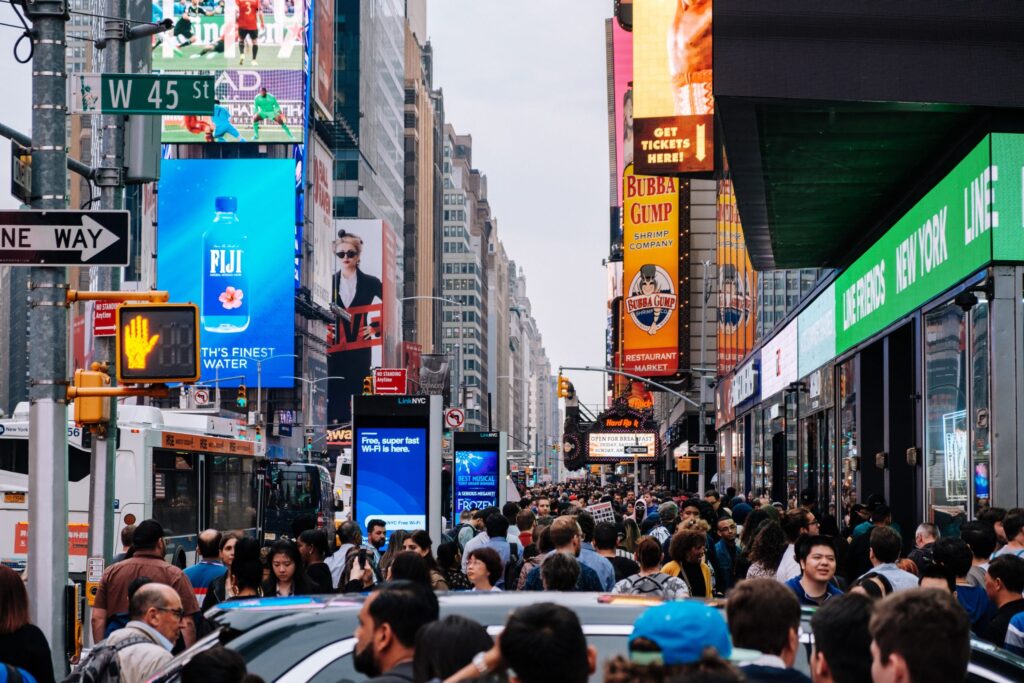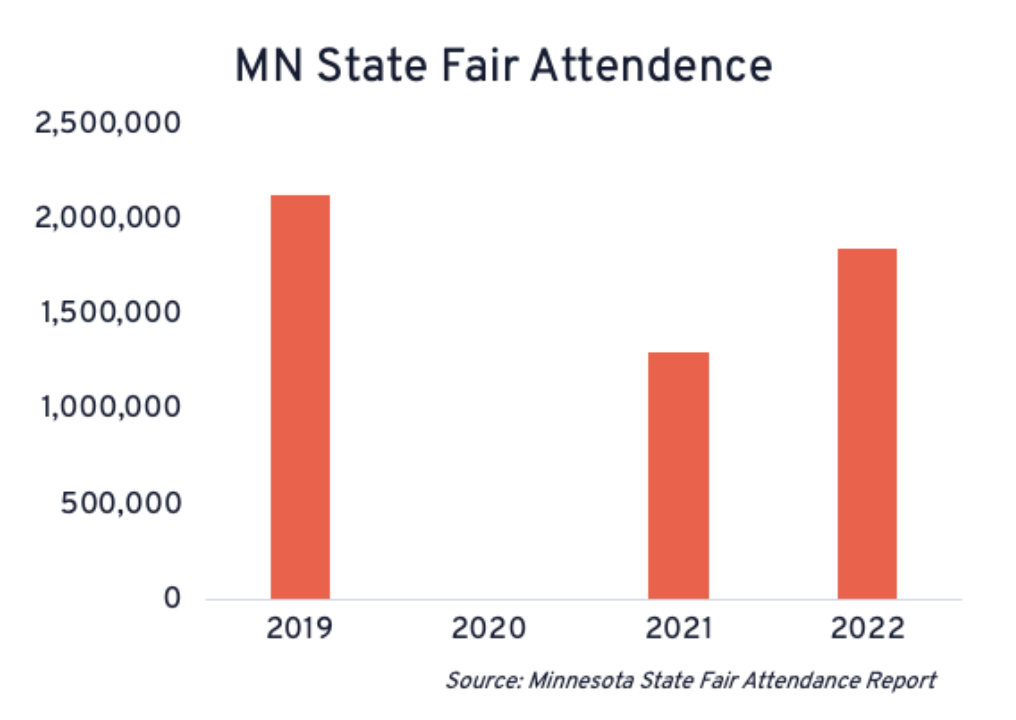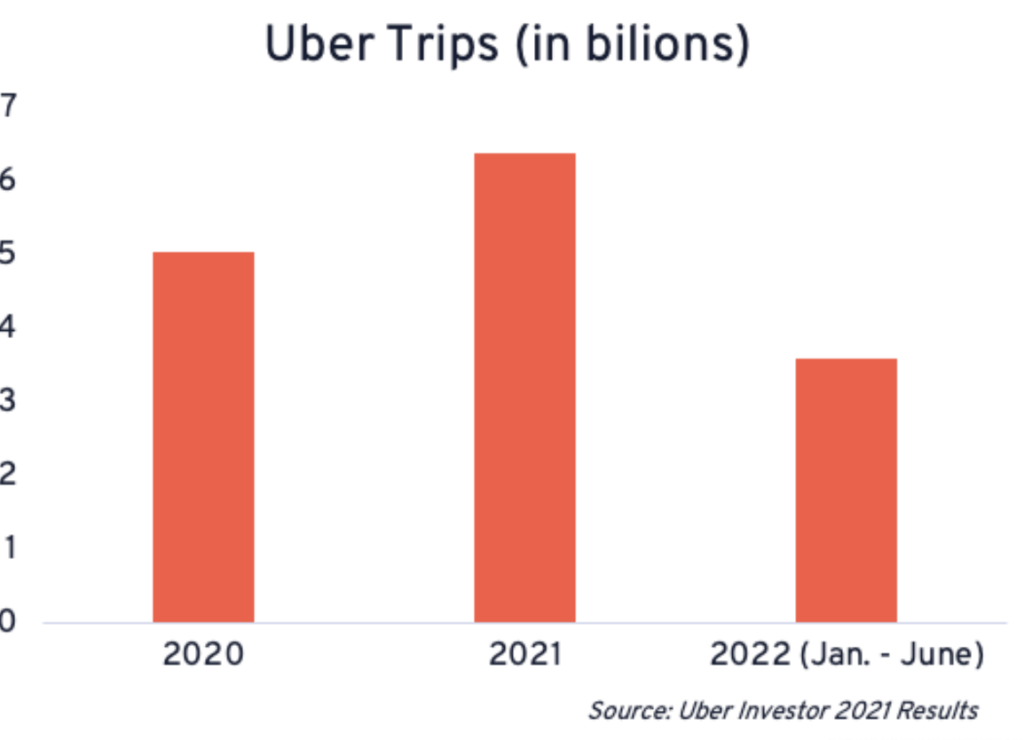The Return of Out-of-home Advertising

The global pandemic led to unprecedented closures within many industries as people across the country stayed home in order to prevent the spread of the virus. This caused a massive shift in consumer behavior as everyone scrambled to figure out their new normal, which caused marketers to adapt their media plans to align with this shift in behavior. One medium that many marketers were removing from their plans at the height of the pandemic was out-of-home (OOH). Why? With many staying home and commutes virtually nonexistent, there was no longer a need to target consumers out of their home if they were never leaving, right?
Now, after more than two years since this massive shift in consumer behavior, many may have forgotten about the impact of OOH. But, marketers, now is the time to bring it back.
People are ready to return to “normal”

Consumers are opening their doors and rushing to get back to their normal, everyday routines and we have the data to back it up. Take the Minnesota State Fair that occurs annually in late August for instance. According to the MN State Fair website, the attendance rate peaked in 2019, dropped after the canceled 2020 fair, and the data since then show that attendance is back on the up and up.
The attendance increases since 2020 demonstrate how more individuals are leaving their homes to return to a “normal,” pre-COVID lifestyle, likely due to increased access to vaccines and treatments.

But this trend isn’t isolated to the Minnesota State Fair — Uber has seen the same trend. Following a dip in trips taken through Uber in 2020, rides are steadily climbing back up. In fact, in 2022, Uber is seeing such a boom in trips being taken through the platform, they are anticipating shuttling over seven billion passengers by the end of 2022, a 39% increase since 2020. Clearly, the data show that consumers are jumping at the chance to return to normal activities.
Why OOH media?
OOH advertisements are advertisements that appear outside of the home (clever name, right?). These ad units cannot target specific people based on interests the way that a digital advertisement can, but they are effective at reaching a large group of people in the same geographic area. The Out of Home Advertising Association of America (OAAA) and Solomon Partners collaborated to produce the 2022 Benchmark Report that stated that OOH advertisements have CPM (costs per thousand impression) of only $2–$9. This is significantly more affordable than online videos (which see CPM between $8 and $40), magazines (which have CPM of $9–$23), and newspapers (which can have CPM as high as $54). So for marketers looking for a cost effective way to reach a mass audience, OOH should certainly be considered.
When considering how consumers are “returning to normal,” OOH advertisements are important because they can reach those who are not on their phones or computers while walking, driving, or flying. The OAAA claimed that the revenue spent on OOH advertising from January to June of 2022 was $4.43 billion — up 33% from the same period in 2021 and equivalent to revenue in the first half of 2019. With 2022 revenue reaching pre-pandemic levels, it can be interpreted that companies are recognizing the importance of OOH inventory as we return to normalcy. Those companies may have also recognized that OOH provides a strong ROI for advertisers.
There are more opportunities and benefits for OOH advertisements following the slowdown of the COVID-19 pandemic. For marketers considering OOH, there are four categories of OOH advertisements that should be considered when deciding to pursue an external strategy (as outlined by the OAAA):
- Billboards: Encompassing traditional billboards, posters, bulletins, and wall murals, when placed in high-traffic areas, these ad units can reach a significant number of people from farther away, and should be used by advertisers looking to build brand awareness.
- Street furniture: From benches and garbage cans to bus shelters, these placements can be effective because they exist at eye level, meaning that using these in high-traffic areas will better reach those walking around. Advertisers should take these into consideration as they may also attach the brand to the community by placing their advertisement onto something that helps build community value.
- Transit: Transit accounts for ads at the airport, on buses and vehicle wraps, and on taxis. Commuting to work and traveling more freely means that airports and buses are back in commission and present ad spaces that consumers will inevitably see while going from place A to B.
- Place-based: Now that consumers are back to attending sporting events, going to movies, and shopping at malls, more people are susceptible to viewing ads in these high-traffic spaces that were not as easily accessible during the height of the COVID-19 pandemic.
While this unique medium offers many opportunities for brands who are looking to increase overall awareness among consumers, there are a few limitations to consider:
- Targeting: Marketers are not able to target the audience that will view this ad, but it is a cost effective way to reach many consumers.
- Measurement: Measures of success are limited. If a brand is looking for other measures of success, such as conversions or leads, OOH might not be the best option. But, by leveraging out-of-home media tactics and implementing them into a brand’s media plan, this impactful medium can assist marketers in reaching their business goals.
What marketers need to know
As consumers return to their normal activities, marketers must leverage media tactics that effectively reach their target audience in order to achieve their goals. And as more consumers feel comfortable leaving their homes and returning to pre-pandemic activities, OOH media offers a unique opportunity to reach consumers where they are today — away from home.


